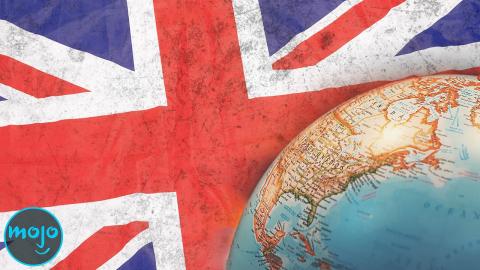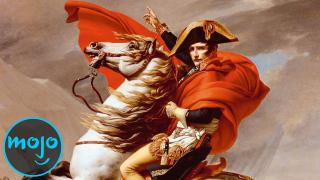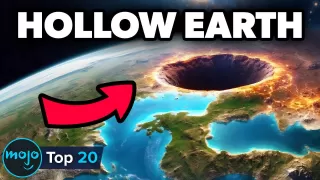Top 10 Largest Empires in History

#10: The Xiongnu Empire
Top 10 Emperors in History
3rd century BCE–1st century CE The Xiongnu were a nomadic people who lived on the Eurasian steppes around the same time as the Roman Republic. The name we know them by is pejorative, having the meaning of “fierce slave”. They overthrew their overlords, the Yuezhi, and conquered much of modern-day Siberia, Mongolia, and parts of China. In 209 BCE, their leader Modu Chanyu organized the tribes into a unified confederation. Together, they defied the power of the Qin dynasty and enjoyed a century of expansion. At one point, their domain spread out over almost 3.5 million square miles of land.
#9: The Yuan Dynasty
Top 20 Bizarre Alternate Theories of History
1271–1368 A grandson of Genghis Khan, Kublai was the fifth Emperor of the Mongol Empire. He declared himself the head of a Han style dynasty in modern China and Mongolia - the eastern portion of the original Mongol Empire. At its height, the Yuan spanned over four million square miles. Kublai founded a new capital city for his empire which, today, is Beijiing. He financed multiple infrastructure projects and encouraged the growth of the Silk Road trade routes. At the end of the 13th century, he attempted invasions of Japan, Vietnam, and Java, but these failed, and the empire proved short-lived. Kublai’s successors were unable to hold the empire against the Ming dynasty, which overthrew it in 1368.
#8: The Umayyad Caliphate
Top 10 US Presidents Who Changed the Course of History
661–750 Four Islamic Caliphates ruled the Muslim world after the death of the Prophet Muhammed. The second of these was the Umayyad Caliphate, which ruled for a century. Historians estimate that at its peak, up to 62 million people lived under Umayyad reign. In the west, the empire controlled all of Africa’s northern coast as well as Spain and Portugal. It reached as far east as the eastern banks of the Indus river in India. It spread Islam throughout the Middle East and into Eurasia. From its capital in Damascus, the Umayyad Caliphate ruled over a vast, multicultural and multi-ethnic state. They were overthrown by the Abbasids in 750 CE.
#7: The Abbasid Caliphate
Top 10 Moments That Changed the Course of History
750–1258 The Abbasid Caliphate endured for half a millennium and ushered in the Golden Age of Islam. In 762, the ruling caliph founded the city of Baghdad, which served as the caliphate’s capital for most of its existence until its sacking by the Mongols. Art and science flourished under the Abbasids: intellectualism was viewed as a virtue and great works were translated from multiple languages into Arabic to spread their knowledge. The caliphate was the world’s central hub for advances in mathematics, science, engineering, and medicine. At its height in the eighth century, the Abbasids governed almost 4.3 million square miles of territory.
#6: The French Colonial Empire
10 Most Evil People In French History
1534–1980 In the 1930s, one out of every 20 people on earth lived under French rule. From 1534 to 1980, the French controlled an empire that expanded and contracted over the years. They conquered parts of North America, Southeast Asia, and most of Northwest Africa. After World War I, the French controlled nearly one third of the African continent. The empire was founded on the racist principle of the so-called “civilizing mission.” The French believed that it was their divine mandate to spread Catholicism and the French language throughout so-called ‘savage’ lands. After World War II, wars of decolonization spread throughout their holdings. By the time Algeria attained independence in 1962, the Colonial Empire had functionally come to an end.
#5: The Spanish Empire
Top 10 Events That Changed the Course of History
1492 - 1976 During the European Age of Exploration, naval power ruled the day. And few navies could compare to that of the Spanish Empire. Their explorers and conquistadors conquered much of the New World. At the peak of the Spanish Empire in the mid 1700s, their holdings extended through much of North America, all the way down to the tip of South America. They also conquered the Philippines in the Pacific and the Canary Islands off the coast of Africa. Spain, along with Portugal, founded one of the first global empires in history. They extracted vast wealth from the Americas and spread Catholicism around the world. One in ten people on earth lived under Spanish rule.
#4: The Qing Dynasty
Top 20 Most Mysterious People in History
1636–1912 Unlike many of the dynasties of Imperial China, the Qing Dynasty was not an ethnically Han kingdom. Instead, the final rulers of Imperial China were Manchus from the north. Taking advantage of Ming instability, the Manchus seized Beijing. They established a conservative Confucian rule over the kingdom. During their reign, the population tripled in size to over 450 million people. The Empire at its peak was almost 5.7 million square miles in size. The Opium War, Anglo-French War, First Sino-Japanese War, and Boxer Rebellion all severely weakened China. They gave territorial concessions to foreign powers, and the revolution that followed ended imperial reign forever.
#3: The Russian Empire
10 Deadliest Wars in History
1721-1917 Relative to other European and Asian powers, Russia was late to the game in colonial conquest. As neighboring kingdoms like Poland, Sweden, Qing China, and the Ottomans declined, the Russians took advantage and invaded. Peter I and then Catherine the Great fought multiple wars of expansion while modernizing Russia into a European-style global power. The Empire grew into parts of China, Eastern Europe, and the Middle East. The Russians also conquered Alaska and parts of Western Canada. According to the 1897 census, there were 125.6 million subjects in the Empire. Tsar Nicholas II ruled over almost nine million square miles of territory.
#2: The Mongol Empire
10 Worst Psychopaths in History
1206-1368 Temujin, also known as Genghis Khan, took a small regional power and created the largest contiguous land empire in history - stretching from Korea to Ukraine. The Mongol Empire covered over nine million square miles and ruled over 17% of the world’s population. Millions died in the Khans’ wars of expansion, and entire civilizations fell before them. The Pax Mongolica, though enforced with an iron fist, brought trade from the Pacific to the Mediterranean and back. Though the empire quickly fell apart in wars of succession, its size and scope represent one of the greatest military feats in history.
#1: The British Empire
Top 10 Famous Sieges in History
16th century - 1997 In 1773, one British lord described this British Empire as “the empire on which the sun never sets”. It was an accurate assessment, given its territory around the world. By 1920, the Empire covered 13.7 million square miles across all seven continents. A quarter of the Earth’s population lived under the Pax Britannica. King George V ruled over the largest kingdom in human history. In addition to all of India, Canada, and Australia, the British Empire dominated large swaths of eastern and southern Africa as well as many Pacific islands. Independence movements led to a wave of decolonization after World War II. The handover of Hong Kong to China in 1997 is considered a symbol of the Empire’s end. As of 2023 however, 56 countries still make up the British Commonwealth.











